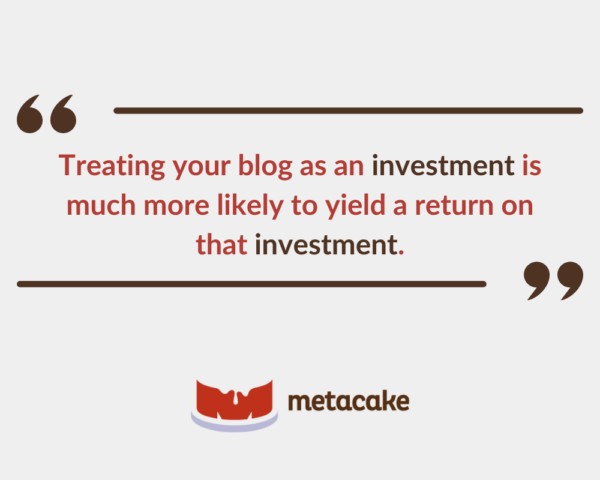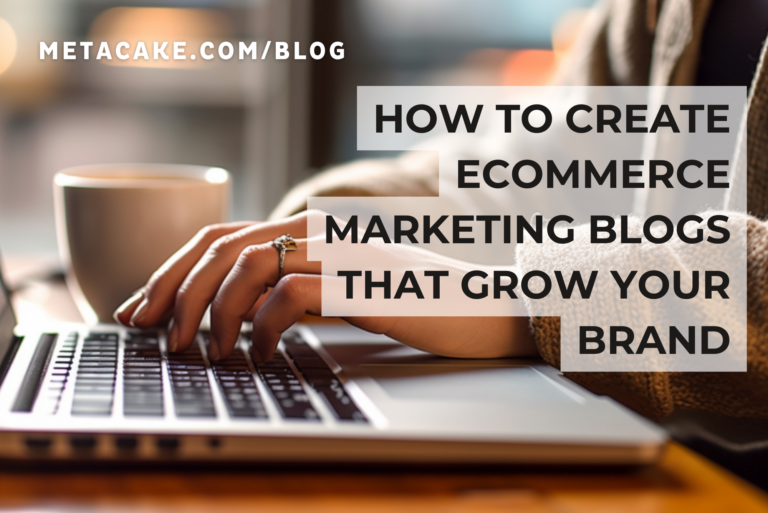Selling your brand, not just your products, creates fans. This only happens through an intentional strategy, including outstanding customer service, thoughtfully designed non-product pages, and great ecommerce marketing blogs.
Today, we’re focusing on the latter. This post will help you perfect ecommerce marketing blogs for your site, step by step.
Step 1: Identify the Purpose of Your Ecommerce Marketing Blogs
First, understand your ecommerce marketing blog’s purpose. What recurring content will you write about?
Consider your products’ larger purpose. It could be sustainability, health, adventure, travel, skincare or haircare, fashion, home decor, pet care, or anything else.
Then, choose one of two key approaches:
- Brand-oriented content. Use your ecommerce marketing blog to share a message related to your “why” — something you want to be known for, speak up about, and help people with.
- Solution-oriented content. These practical posts teach your customers how to use their purchases successfully. You can also write about your products’ manufacturing process, methodology, and design.
Step 2: Choose a Great Name
Now that you know your purpose, you can choose a better name than “Blog.” A generic title says little about your brand and is unlikely to attract many customers.
For example, at Metacake, we call our ecommerce marketing blog “The Growth Academy.” Choose an intriguing label that also provides some context.
Step 3: Choose Your Content Categories
Now that you know your ecommerce marketing blog’s purpose and name, decide on specific content categories. Establishing these early on establishes lanes to work within.
Consider these examples:
- The making of your product (what’s your process?)
- Behind the scenes at your company (employee stories, team activities, what a day at the office is like, etc.)
- Tips for using your product (how to get the most out of it)
- Content related to your product’s larger purpose (tips about travel, health, skincare, haircare, fashion, pets, cooking, etc.)
Step 4: Write Engaging Content
The next step is to write content your customers will enjoy reading.
An ecommerce marketing blog can boost your SERPs ranking, but that isn’t your primary goal here. Your goal is to convert visitors and customers into brand fans.
You can hire a writer if you don’t have the time or skills to write the posts, but since you know your brand best, develop the ideas yourself. Don’t turn the writer loose and hope for the best. Your content will be better and more relevant if you give your writer content briefs and outlines.
Step 5: Use That Content Everywhere
Once the content is written, use it everywhere, including in your:
- Internal links between pages: Internal linking is one of the few SEO strategies you can control. It’ll have a tremendous impact on your site’s traffic.
- Email marketing: Use your ecommerce marketing blog’s content in your emails.
- Inspiration for other types of content: Ecommerce marketing blog posts make great inspiration for social media posts or videos. Just one blog post usually yields several Instagram posts.
Step 6: Create a Great User Experience
Blogging is fairly straightforward, so don’t overcomplicate it. Follow our top tips for creating a useful, enjoyable ecommerce marketing blog experience, and you’ll be alright.
First, you need a scannable listing page that makes it easy to find articles. Include:
- Site header
- Method of filtering if there’s a large volume of posts (usually category filtering and/or a search bar)
- Simple blog listings (you could do only a title and a date or opt to include the first sentence or two of the post)
- Pagination (we don’t recommend the infinite scroll, as it can frustrate customers)
- Area for customers to submit a question (why not take suggestions for topics customers want to hear about?)
- Product grid to direct customers back to shopping if they’ve reached the end of the page
- Footer
Second, we recommend this layout for the actual ecommerce marketing blog posts’ pages:
- Top section: Orient the reader
- Site header
- Hero image for the article (optional)
- Article title
- Article content that’s engaging and easy to read
- Good typography
- Appropriate use of headings (this breaks the text into scannable sections)
- Link to other pages, especially products, when relevant
- Intermix videos and photos
- When relevant, intermix product listings or product grids (you still want to sell while customers read!)
- Bottom section: Wrap up and provide the next steps
- Grid of related products
- Comment section (optional)
- Elements for brand reinforcement, trust-building, and de-risking, such as customer reviews or a reminder of your guarantee or warranty
- Footer
How to Measure Your Ecommerce Marketing Blog’s Performance
Attributing sales back to your ecommerce marketing blog can be challenging. Keep an eye on these metrics:
- Watch your customers’ time on page and exit rate to measure your posts’ engagement.
- When blog pages are included in the customer’s path, look at your site’s conversion rate to measure how well blog posts contribute to sales.

Ready to Start Blogging?
Don’t let your ecommerce marketing blog be a catchall for random thoughts. Treating your blog as an investment is much more likely to yield a return on that investment. Done well, an ecommerce marketing blog’s success can help you build brand value and increase sales.
Happy writing!
